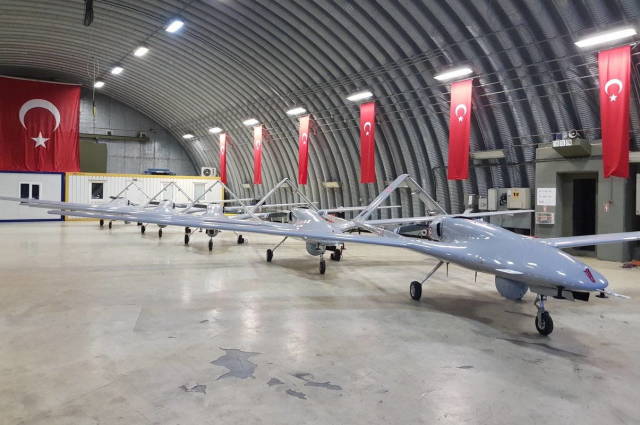Literally during 2020, Turkey and its allies in Syria, Libya and the Caucasus demonstrated the increased capabilities of Turkish-made unmanned aerial vehicles (UAVs). Foreign media especially emphasized their ability to hit air defense systems of Russian origin. The success of Turkish drones has not only forced us to talk about a new stage in the development of military affairs, but also gave a significant export impetus to the Turkish defense industry.
According to a number of sources, Ankara has successfully formed a national supply chain of unmanned aircraft systems (UAS), ending its dependence on foreign, mainly Western, suppliers. The latter is a priority of modern Turkish policy in the light of the developing crisis in relations with the United States and the European Union.
Although the first projects of Turkish drones date back to the turn of the late 80s and early 90s, the "Roadmap for Turkish UAV production", developed by the Turkish Defense Industry Directorate (today SSB, formerly SSM) to meet the needs of the Armed Forces, gendarmerie, police and the National Intelligence Organization (MIT), appeared only in 2012. The Turkish BASS received a new impetus after the failed attempt to overthrow the current president of the country, Recep Tayyip Erdogan, in 2016.
According to Emre Caliskan, an analyst at the London-based international consulting company IHS Markit, the large-scale purges that followed the coup devastated the ranks of the Turkish Air Force. The reduction in the number of trained combat aviation pilots has affected the combat capabilities of this type of aircraft. Given that, for example, it takes up to 4 years to train a pilot for the F-16, and up to 9 months for a UAV operator, Ankara tried to compensate for the lack of manned aviation capabilities with the help of UAS. The development of UAVs was given the highest priority, with the ultimate goal of gaining independence from foreign countries and successfully establishing itself on world markets. This strategic shift "allowed Turkey, even as a middle power, to challenge the interests of the leading military countries," E. Kaliskan believes.
Turkish-made UAVs: the formation and rise of the industry
According to open sources, individual representatives of the Turkish military command and security forces have already thought about the possibility and expediency of using unmanned aircraft platforms for operational purposes during the conflict with the Kurdistan Workers' Party (PKK) detachments in Eastern Anatolia. Although clashes with the PKK have been going on since 1984, and the advantages of drones for reconnaissance, territory control and search and rescue seemed obvious, the Turkish Armed Forces began using UAVs only in 1989.
The first model was the Banshee target drone manufactured by Meggitt Defense Systems (Great Britain). Later, in 1993, Berlin transferred to Ankara 5 CL89 UAVs manufactured by the Canadian company Canadair (now part of the Bombardier corporation). However, due to logistical problems and accidents, deliveries of these models were discontinued. Turkey replaced them with American GNAT-750 reconnaissance UAVs. The system was adopted in 1994. As a result, the Turkish Armed Forces became the second, after the United States, NATO army using medium-altitude reconnaissance UAS for long patrols, or MALE class UAVs (Medium Altitude Long Endurance). Nevertheless, at that time, the command of the Turkish army perceived UAVs as an extension of artillery systems, and until 1997, GNAT-750 devices were used only for artillery reconnaissance in the vicinity of Chorlu (Çorlu).
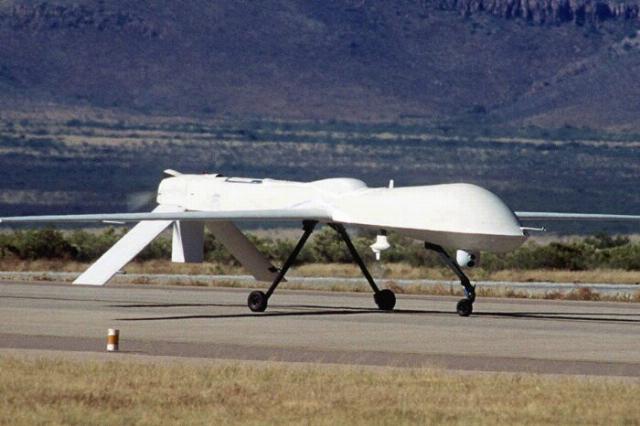
GNAT-750 reconnaissance UAV
In May 1997, a GNAT-750 UAV detachment consisting of 6 aircraft and one ground control station (NSO) was deployed to Batman Air Base and took an active part in internal security operations. The successful results of the use of UAVs led to the fact that a year later, in May 1998, the detachment was strengthened. To do this, Turkey purchased and received two more improved I-GNAT devices and two NSOs in the same year.
At the same time, in order to organize its own production facilities, Ankara began to encourage the local weapons sector to participate in the UAV production process. In the period up to 2008, the Turkish aviation industry introduced various prototypes of drones, such as: Keklik (1996), Martı (2003), Gözcü (2007), Öncü (2008).
However, the Turkish achievements of that period did not meet the needs of the Armed Forces. To cover them, a decision is made to purchase UAVs in Israel. The corresponding contract worth $183 million for the supply of 10 Heron UAVs Ankara signed it in 2008. The most important factor that played in favor of Israeli products instead of the American Predator was Jerusalem's agreement to install the Aselfir300T optical-electronic intelligence and surveillance complex manufactured by the Turkish company Aselsan on the platform.
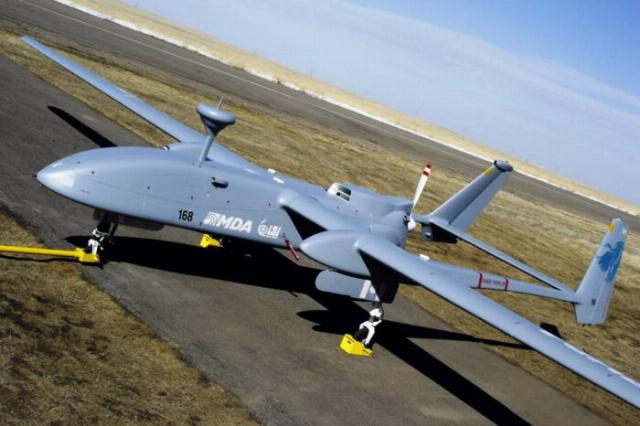
Heron UAV
According to Turkish sources, despite the deal, Heron's capabilities still did not meet all the requests of the Turkish Armed Forces. During operation, three drones crashed, and the rest had problems with logistics. In addition, diplomatic tensions between the two countries have reduced Israeli activity in offering solutions to Turkey. The friction between Jerusalem and Ankara convinced the Turkish authorities to abandon the services of Israeli UAV manufacturers and turn to the possibilities of domestic industry.
Today, the Turkish UAS industry has developed into a fairly extensive network, including both developers and manufacturers of unmanned platforms, as well as suppliers of key elements, avionics, weapons and control systems. According to some experts, Turkey has become a "drone superpower" in a short period of time. According to other estimates, the true state of the industry is far from enthusiastic publications in the media.
The modern ecosystem of Turkish-made UAVs
Production of engines for UAVs
Turkish Engine Industries (TEI), a joint venture between Turkish Aerospace Industries (TAI) and American General Electric (GE), founded in 1985, plays a leading role in this sector. Despite the current political and economic obstacles, the company continues its activities and has achieved some success.
It should be noted that Turkish UAS are powered mainly by imported engines. So, the widely advertised Bayraktar TB2 UAVs (Bayraktar TB2) are equipped with Austrian Rotax engines. However, after the use of these drones in combat operations in Nagorno-Karabakh, the owner of Rotax, the Canadian company Bombardier Recreational Products, announced the termination of deliveries of engines to Turkey for installation on UAVs. This once again illustrated the difficulties of exporting Turkish products with foreign components, and forced Ankara to look for a possible replacement.
The TEI-PD170 engine is presented as a promising model for use on unmanned platforms. SSM placed an order for its development in December 2012. The first test of the power plant was successfully completed in December 2018. The engine is a 2.1 L turbodiesel with an output power of 172 (± 2) hp. According to the manufacturer, depending on the altitude, the unit develops the following power:
 |
| Characteristics of the TEI-PD170 engine. |
| Source: invoen.ru |
It is reported that the installation of PD-170 on the ANKA-S type UAV in combination with the design changes made it possible to significantly improve the flight performance of the drone. The next bench tests of the engine took place in early autumn 2020. According to their results, in October 2020, it was announced that the PD-170 would be installed on the next modification of the Bayraktar.
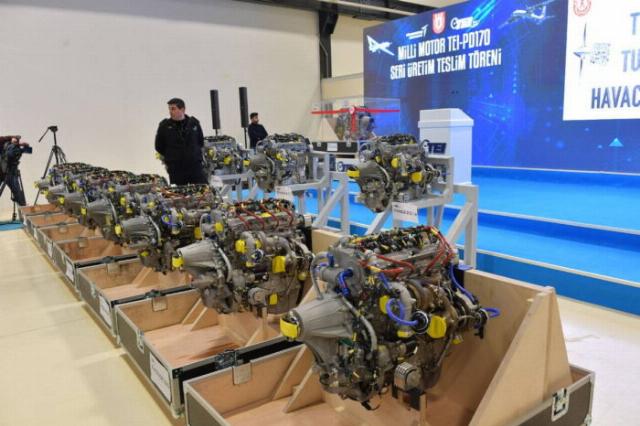
TEI-PD170 engines manufactured by TEI
At the same time, TEI is developing a more powerful piston engine, which received the PD-220ST index with an output power of 220 (± 2) hp. Depending on the height, this indicator varies within the following limits:
 |
| Characteristics of the PD-220ST engine. |
| Source: invoen.ru |
The PD-170 and PD-220ST engines from TEI are used to rotate the propellers of the Anka UAV and the traction screws of the Aksungur UAV. At the same time, after 6,000 hours of testing, the FEDEC engine management system, also developed by TEI, was put into mass production. On November 23, 2019, TEI delivered 40 PD-170 engines to the customer. The TEI-PD series is owned by SSB and can be integrated into domestic UAVs or exported. It was announced, for example, about the possible installation of PD-220ST on the new Akinci heavy twin-engine UAV developed by Baykar Makina. In the meantime, the two Akinci prototypes built are equipped with AI-450S turboprop engines produced by the joint Ukrainian-Turkish enterprise Black Sea Shield. The engine develops power in the range from 450 to 750 hp. Its purchase under the Akinci project continues.
Another area of activity for TEI engineers is power plants for future jet-powered UAVs. The company recently introduced the TJ300 turbojet engine with a thrust of 1.3 kN. The product is primarily intended for use in cruise missiles, but can also be installed on UAVs. Earlier, in 2011, TEI, in cooperation with the Turkish Scientific and Technical Research Council (TÜBITAK), launched the production of the TJ90 turbojet engine and integrated it into target drones since June 2013.
It is expected that in the future, Turkish UAVs will be equipped with turboshaft and jet engines of national production with very high characteristics. So far, despite serious efforts and significant funding, none of the UAV engines developed in Turkey (including the simplest piston PD-170) has been brought to mass production. Obviously, the creation of such products is a very non–trivial design and industrial task.
Continuation:
Turkish-made UAVs: ecosystem and combat experience
Based on the publications Jane's International Defense Review, DefenceTurkey,EuropeanSecurity & Defense, as well as the resources of the magazine.zenith.me, dayan.org,
The full text of the article is framed in a brochure and [b]published here
The contents of the brochure:
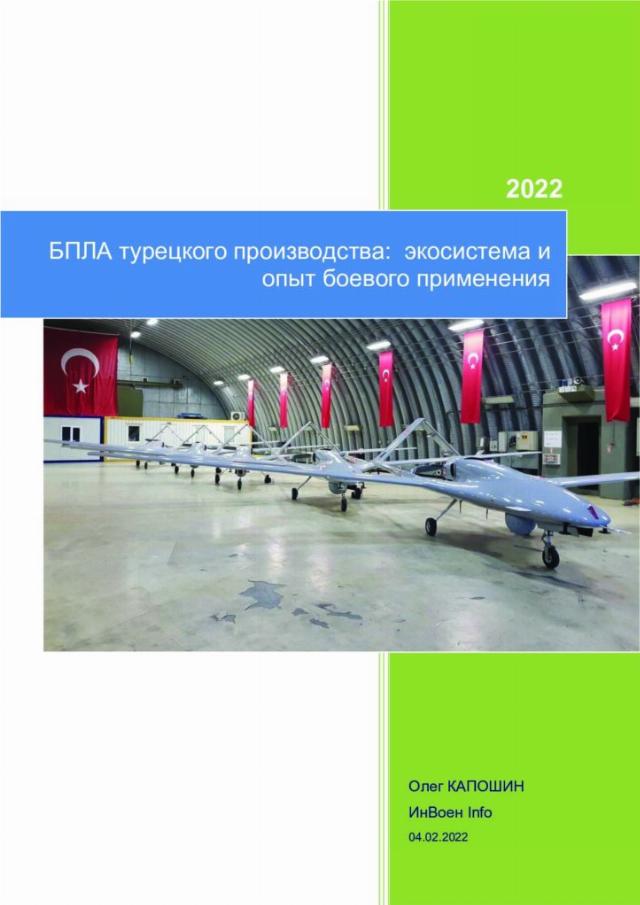
- The formation and rise of the industry
- The modern ecosystem of Turkish-made UAVs
- Production of engines for UAVs
- Development of the system architecture
- Armament
- ANKA UAV
- AKSUNGUR UAV
- BAYRAKTAR TB2 UAV
- AKINCI UAV
- KARAYEL-SU UAV
- Kamikaze drone KARGU-2
- The use of Turkish UAVs in various TVD
- Syria
- Libya and the Caucasus
- Assessment of the actions of Turkish-made UAVs
- ZRPC "Pantsir S1E"
- Osa-AK and Osa-AKM air defense systems
- Prospects for the development of Turkish-made UAVs
